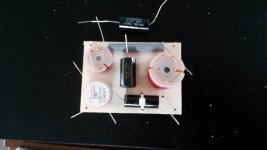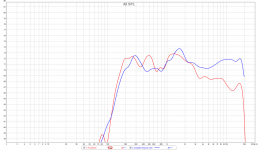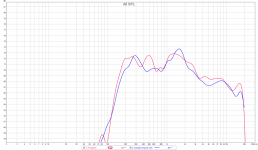+1 for in place measurements.
Designing purely anechoically (or quasi-anechoically) adds an unnecessary complication to the measurements and tuning process. Helps to have something like OmniMic that can automatically blend gated and non-gated measuremetns.
If you must, splice in near-field after you've taken the far field measurements to use as a level setting guide.
The alternative is a mess few get right, I think. 🙂
Best,
Erik
Designing purely anechoically (or quasi-anechoically) adds an unnecessary complication to the measurements and tuning process. Helps to have something like OmniMic that can automatically blend gated and non-gated measuremetns.
If you must, splice in near-field after you've taken the far field measurements to use as a level setting guide.
The alternative is a mess few get right, I think. 🙂
Best,
Erik
View attachment 557618 Does this look like a good crossover layout?
Hi Zonneschimmel,
I can't comment on the crossover topology but I'd recommend flipping the bottom left and top right coils onto their sides and orientating their poles better (see link re: passive crossover component placement)
Placement of coils in crossover networks
View attachment 557618
So the parts arrived. Does this look like a good crossover layout? The cap that isn't on the board will go below the resistor, second resistor is underneath the bottom cap.
Looks fine just orient the air core inductors so that their magnetic axis are orthogonal so you do not get crosstalk between them via magnetic coupling.
Have been listening to them for a while now and I like them. They were a bit fatiguing at the start but a bit of wool damping fixed it up nicely. 1 channel of the 2.1 system I intended to use them with has died in the mean time. I'm taking it apart to see if it's fixable, if not I might have to splurge for a Dayton 2.1 plate amp MCA2250E and a Tympany 830946.
- Status
- Not open for further replies.
- Home
- Loudspeakers
- Multi-Way
- PC desktop speakers


